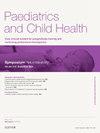Inherited white matter disorders in children
Q3 Medicine
引用次数: 0
Abstract
Inherited white matter disorders (IWMDs), otherwise known as leukodystrophies, represent a group of rare and heterogenous neurological conditions affecting the white matter of the central nervous system (CNS). With a wide range of differential diagnoses and associated medical complexities, they often pose a diagnostic challenge to clinicians. Rapid technological advancement including the availability of genetic investigations such as whole genome sequencing (WGS) is leading to an increasing number of patients with a confirmed genetic diagnosis. For the majority of IWMDs there is no specific treatment, and the focus of clinical management remains symptomatic and involves a multidisciplinary team and holistic approaches. Up until recently, only natural history trials were available, but now the focus is shifting to novel targeted therapies. Early diagnosis and prompt referral to specialized IWMD centers is crucial for optimum management of affected children or asymptomatic affected siblings. Collaborative efforts are needed to achieve two important goals 1) to establish international patient registries for long term natural history and recruitment to new treatment trials and 2) to encourage wider newborn screening programmes for early detection of these rare diseases at the asymptomatic stage. In this review, we aim to summarise the common clinical presentations, diagnostic investigations, management and prognosis of the more commonly encountered inherited white matter disorders in children.
儿童遗传性白质紊乱
遗传性白质疾病(iwmd),也被称为白质营养不良,是一组影响中枢神经系统(CNS)白质的罕见和异质性神经系统疾病。由于广泛的鉴别诊断和相关的医学复杂性,它们经常对临床医生提出诊断挑战。快速的技术进步,包括全基因组测序(WGS)等遗传调查的可用性,正在导致越来越多的患者得到确诊的遗传诊断。对于大多数大规模杀伤性武器,没有具体的治疗方法,临床管理的重点仍然是症状性的,并涉及多学科团队和整体方法。直到最近,只有自然史试验可用,但现在的重点正在转向新的靶向治疗。早期诊断和及时转诊到专门的大规模杀伤性武器中心对于最佳管理受影响儿童或无症状受影响兄弟姐妹至关重要。需要合作努力来实现两个重要目标:1)建立长期自然病史和招募新治疗试验的国际患者登记册;2)鼓励更广泛的新生儿筛查规划,以便在无症状阶段早期发现这些罕见疾病。在这篇综述中,我们旨在总结常见的儿童遗传性白质疾病的临床表现、诊断调查、治疗和预后。
本文章由计算机程序翻译,如有差异,请以英文原文为准。
求助全文
约1分钟内获得全文
求助全文
来源期刊

Paediatrics and Child Health (United Kingdom)
Medicine-Pediatrics, Perinatology and Child Health
CiteScore
1.20
自引率
0.00%
发文量
70
 求助内容:
求助内容: 应助结果提醒方式:
应助结果提醒方式:


